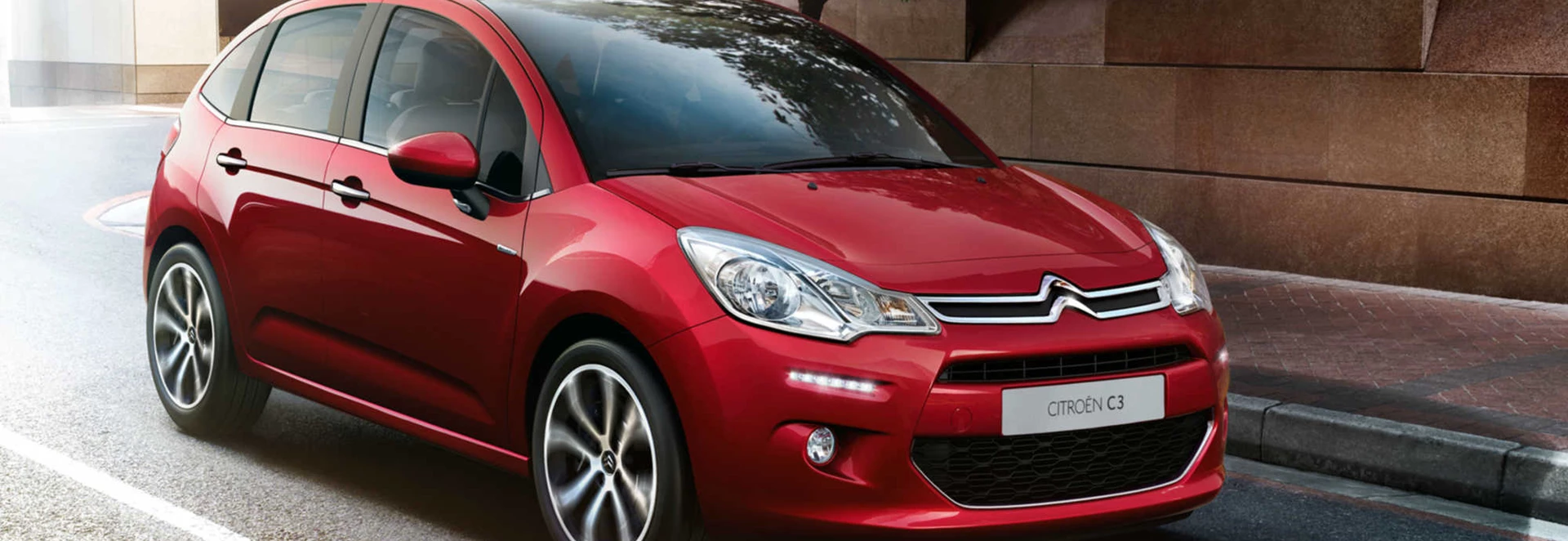The Citroen C3 is a contender in the extremely competitive supermini class. It is also a cheaper and less premium entry compared to the similarly-sized DS3. The chances of the C3 approaching the popularity of the Ford Fiesta or Vauxhall Corsa in the UK are very slim, but it is a competent alternative to those cars.
Available only as a five-door, the C3 scores well for practicality and low running costs. Performance is a lower priority. If you want a Citroen hot hatch of this size you need to investigate the DS3 instead. No C3 has a power output of over 120bhp, and most don't come close to that.
Nevertheless, there's a wide choice of engines including four-cylinder diesels and petrol units with either three or four cylinders. Transmissions are conventional manual, automated manual or fully automatic.
Performance
Even the most powerful C3 is unable to accelerate from 0-62mph in under ten seconds according to Citroen's own figures. The slowest of all, the e-HDi 70 with the 69bhp 1.4-litre diesel engine, takes over sixteen seconds. They can all do more than 100mph, but not by much, and it's difficult to imagine many buyers wanting to do this in any case.
The ETG automated manual gearbox helps with fuel economy and CO2 emissions but, like all others of this type, the changes are annoyingly slow.
Four-cylinder versions sound just as uneventful as you would expect them to. The three-cylinder ones make a much more interesting sound, and while they're a bit louder than Ford's EcoBoost and much louder than the similar unit launched by Vauxhall in 2014, they're never annoying. Strangely, every three-cylinder C3 (and Peugeot 208) we've driven with this engine has had a very high clutch biting point, for which we have not yet worked out a sensible explanation.
Ride and Handling
Broadly speaking, the diesel cars are much more comfortable than the petrol ones, though the extra weight of their engines suggests that this should not be the case.
There's nothing wrong with the handling of any car in the range. Across the board, they're easy and pleasant to drive both in town and out in the country. The ride quality situation, however, is more complicated. Broadly speaking, the diesel cars are much more comfortable than the petrol ones, though the extra weight of their engines suggests that this should not be the case. The worst petrol specification we've driven was horrible, while the best diesel could, within reasonable limits, be driven hard over vicious bumps and soak them up so well you'd hardly know they were there. The difference between the two is alarming, and possibly unprecedented within a single range of small hatchbacks.
Interior and Equipment
The Citroen C3 name was first introduced back in 2002, when it replaced the popular Saxo supermini.
The most notable feature of the C3 is its Panoramic Zenith windscreen, which is standard on the Selection and Exclusive models and a £300 option on the VTR+, and extends behind the heads of the front-seat occupants. According to Citroen, the angle from the average driver's eyeline to the top of the screen is 108 degrees, hugely more than the industry average 28 degrees. If you don't like this but can't avoid it because the C3 you most want can't be specified with a normal windscreen, there's an extendable plastic cover which brings the view back to normal. The entry-level VT trim has little kit to offer, but all the others have alloy wheels, air-conditioning, Bluetooth connectivity and a USB socket. Rear electric windows, an alarm and heated and folding door mirrors are available only on the Exclusive trim. With the rear seats in place, the luggage capacity is 300 litres, which is slightly more than you get in the Fiesta or Corsa. With the rear seats folded the available volume increases to 1,121 litres up to roof level.
Cost
Nine of the sixteen variants have CO2 emissions under 100g/km and do not therefore require you to pay Vehicle Excise Duty.
If you're on a very strict budget the C3 probably won't be of much interest, as no version costs less than £10,000 and only one is priced below £11,000. Several of them cost more than £16,000, making them competitive with rival Fiestas and Corsas but certainly not cheaper. But they should be cheap to run. Nine of the sixteen variants have CO2 emissions under 100g/km and do not therefore require you to pay Vehicle Excise Duty. The very slow e-HDi 70 diesel models have official fuel economy of 83.1mpg, and while that would be hard to match in real life it should certainly be possible to average over 60mpg as long as you don't use those cars only in town. At the other end of the scale, the VTi 120 petrol automatic has a CO2 rating of 150g/km and will cost £145 per year to tax. It's also one of the more expensive C3s to buy, at £16,005, and will probably lose more of its value by resale time than any of the diesels.
Our Verdict
If you're shopping for a supermini and have no particular brand loyalty, there's a high chance that you'll end up signing on the dotted line at a Ford or Vauxhall dealership. That said, the Citroen C3 should not be dismissed out of hand. While the drive does have flaws, there are also some nice design choices and it’s certainly practical for its class. It's a very appealing little car and you'll probably enjoy it, more so for reasons of running costs and ride quality if you opt for one of the diesel engines.




